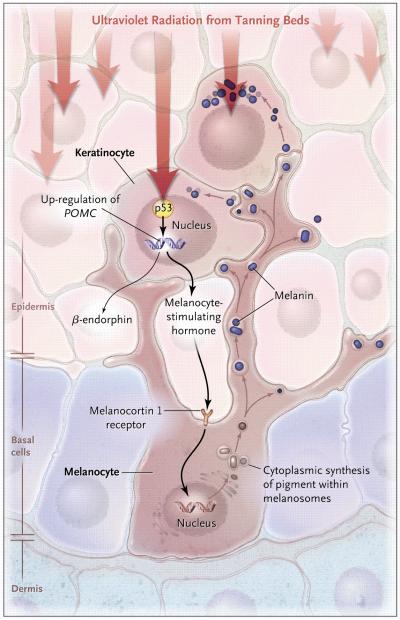Fig 1.
Molecular Mechanism of Skin Pigmentation Induced by UV Radiation
Ultraviolet light triggers DNA damage in the nucleus of keratinocytes, resulting in the activation of p53, which transcriptionally up-regulates expression of the gene encoding proopiomelanocortin (POMC). POMC is post-translationally processed to produce melanocyte stimulating hormone (MSH) and β-endorphin. After secretion, MSH acts on its receptor, the melanocortin 1 receptor, located on melanocytes at the basal layer of the epidermis, thereby inducing the production of pigment, which is subsequently transported out of melanocytes to overlying keratinocytes, where the pigment vesicles coalesce over the sun-exposed side of the nucleus, resulting in tanning.

